The Great Fire of 1835 devastated the city during one freezing December evening, destroying hundreds of buildings and changing the face of Manhattan forever. It underscored the city’s need for a functioning water system and permanent fire department.
Listen in as we recount this breathtaking tale of the biggest fire in New York City history.
___________________________________________________________________________
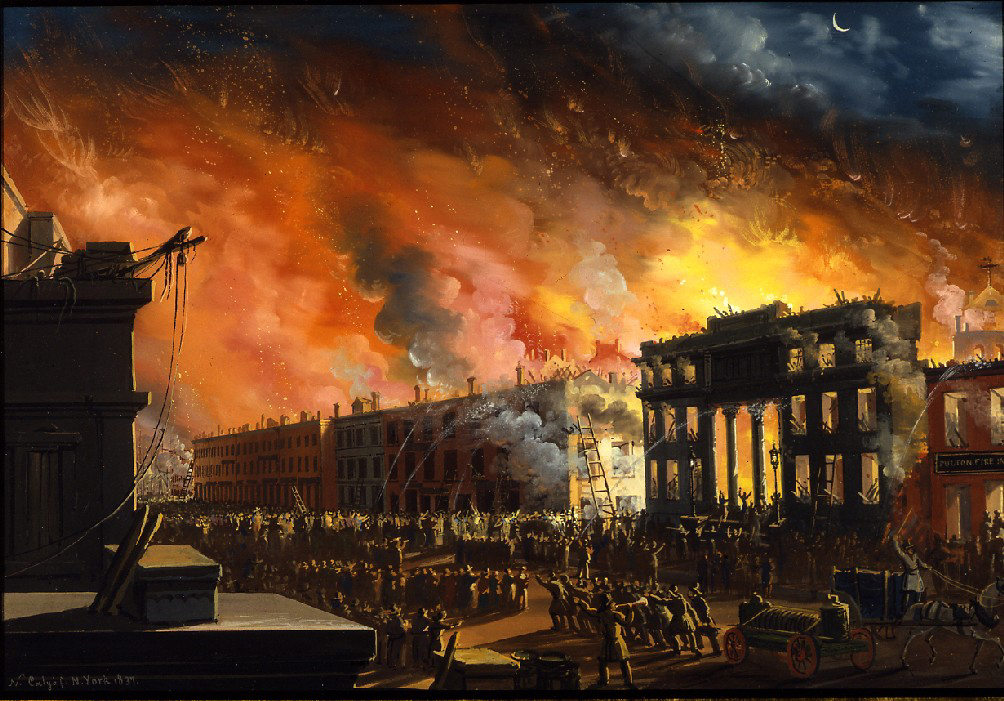
Nicolino Calyo captured the terrible sight of the blaze as it might have looked from Red Hook, Brooklyn. (He also painted the breathtaking scene above.)

Before the blaze: Charming Wall Street in 1825, from a 1920s guide book. Prosperity from the Erie Canal was just around the bend. (Courtesy Ephemeral New York)
The original Merchant’s Exchange building, one of New York’s more ornate building, featuring a statue of Alexander Hamilton standing nobly in its rotunda. (Illustration courtesy the New York Public Library image gallery)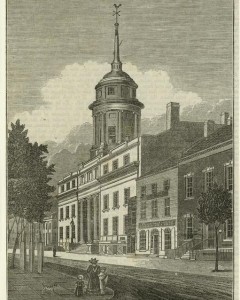
What’s the damage?: the red areas below indicate the blocks destroyed by the swift moving conflagration (map courtesy CUNY)
City officials, including mayor Cornelius Lawrence, could only watch and stare as the blaze over takes a stretch of prominent buildings. Also included below is Charles King, who watches as his newspaper the New York American is overcome by the fire.
Calyo’s painted depiction of the “Burning of the Merchant’s Exchange”
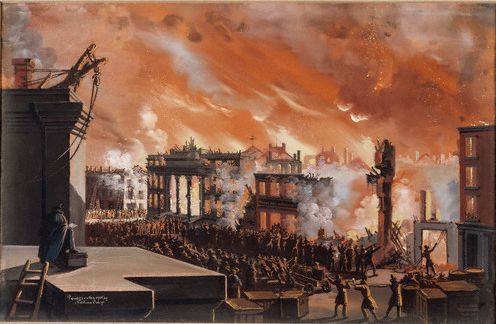
Another interpretation from the same angle — the futility of battling the blaze was chillingly illustrated from the corner Wall and William streets, where winds carried the flames from building to building, high above the heads of fighters below.
As the old Dutch Church on Garden Street caught fire, a morose parishioner mounted the organ and began playing a dirge. (Where’s Garden Street? According to Forgotten New York, Garden Street was “between William Street and Broadway, just south of Wall Street” and is now part of Exchange Place today.)
Aftermath at the Merchant’s Exchange. Many business owners actually tranferred their stock to the Exchange building, unfortunately thinking it would be impervious to the encroaching flames.
The devastation that met New Yorkers the following day led most to believe the city would never recover.
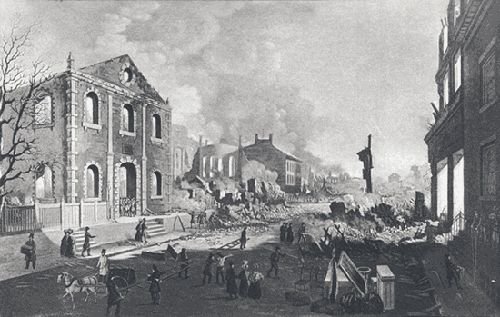
Most of the buildings on today’s Stone Street were built in the immediate years following the fire, Greek Revival-style countinghouses that are refitted for modern times as taverns and restaurants. It’s also one of the few cobblestone streets still around in the Financial District area.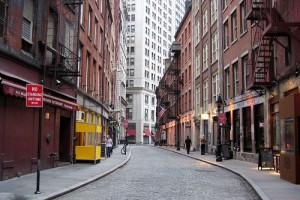
Who exactly was Nicolino Calyo, the man who painted so many vivid pictures of the Great Fire? Nicolino Vicomte de Calyo was a political dissenter who fled Italy in the 1830s and settled in Baltimore, becoming entranced by the new American landscape. Although his most famous depictions of New York are of the city in flame, he also painted a few serene views (like the one below, a vantage of the harbor from Brooklyn Heights).
His works are in many New York museums, including the “Burning of the Merchant’s Exchange” which is at the Museum of the City of New York.
Another cool resource on the Great Fire is up at the CUNY website, with more pictures and more backstory as to New York’s capacity to fight blazes in the early 19th century.
And if you’re so inclined, why not visit the New York City Fire Museum? It’s in SoHo and afterwards you can take a stroll down to the Financial District and imagine what it all might have looked like.

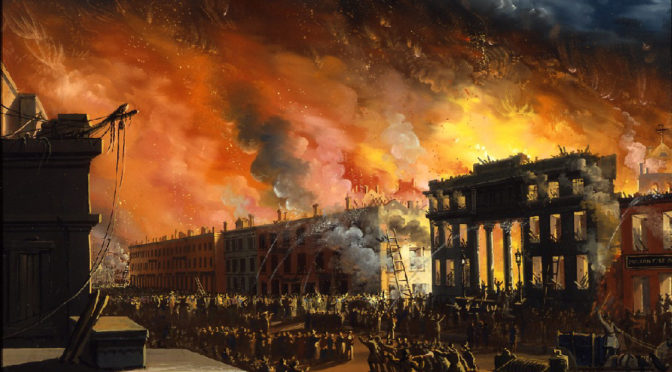
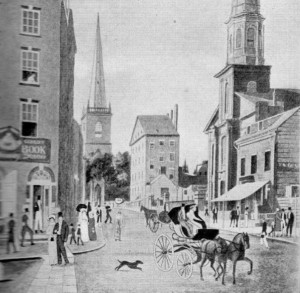
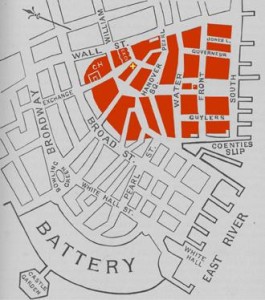
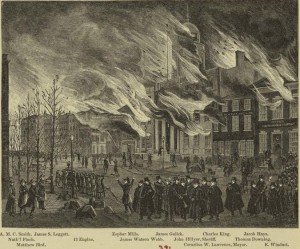
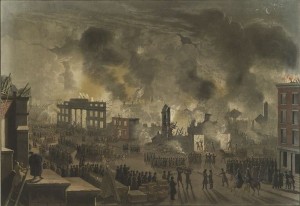
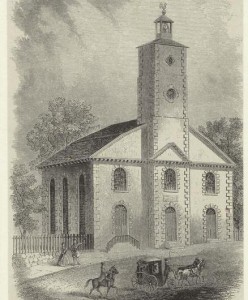
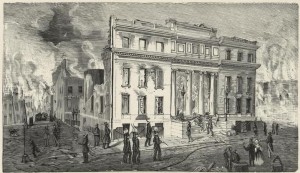
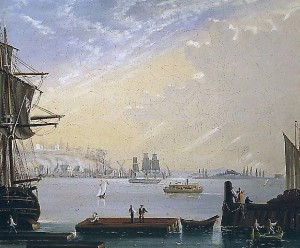
3 replies on “PODCAST REWIND: The Great Fire of 1835”
Nicolino Calyo’s paintings are quite good. Do you know he lived for 85 years? He actually immigrated here in 1834 and set up a studio in Baltimore.
this was excellent Do you have a podcast on the great fire of 1741?
Don’t think they do but I’d love to see one on that subject!